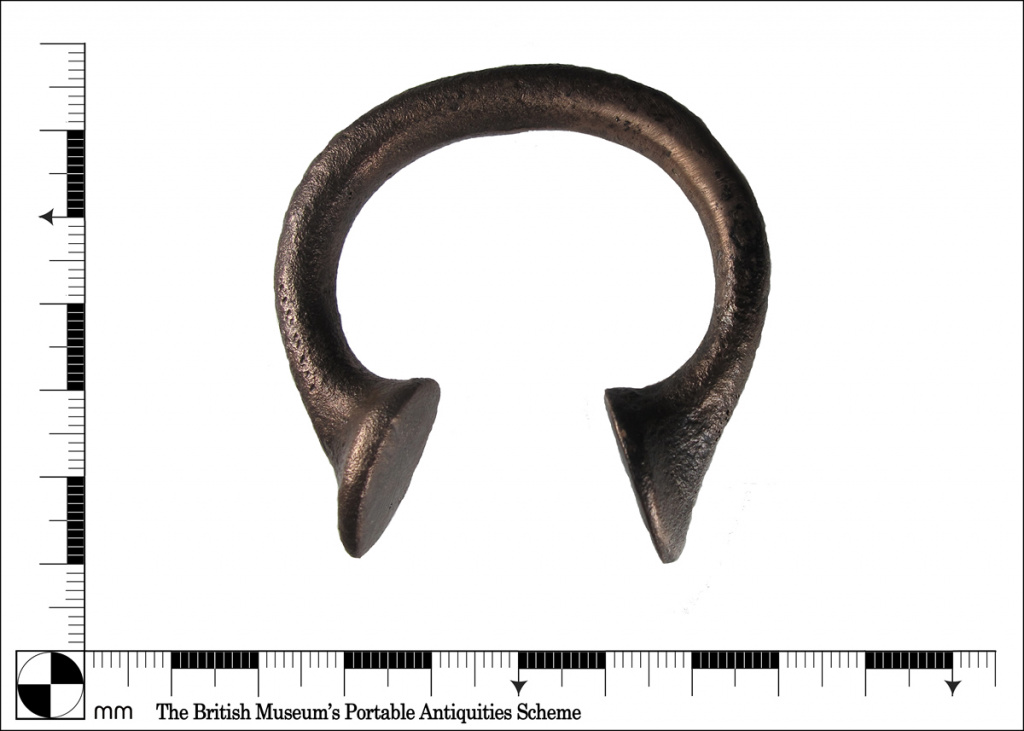PAS Review: week to 9 April 2021
PAS Review: week to 9 April 2021
A round-up of some of the finds recorded at the PAS for the week ended 9 April. There were 204 finds recorded in this week
Featured Find
Currency Bar
A complete cast copper alloy “manilla” dating to probably 18th-19th century. Dating is difficult because the design changed little from their introduction in the late 15th century. The word “manilla” is thought to come from the Spanish or Portuguese word for bracelet. They were the principal form of money in West Africa and were worn by women to display their husband’s wealth. They may have been introduced to Africa by the Phoenicians, Carthaginian explorers or Egyptians, who were know to use penannular money.
European traders therefore found a readily accepted form of currency that they could use to trade for ivory, pepper and slaves. In the early 18th century Bristol and then Birmingham became the most significant European brass manufacturing city and it is likely that most types of brass manillas were made there.
In 1843, a Liverpool ship, the Duoro was wrecked and sunk at Round Rock, Isles of Scilly. Divers have since found large numbers of manillas on the wreck.






